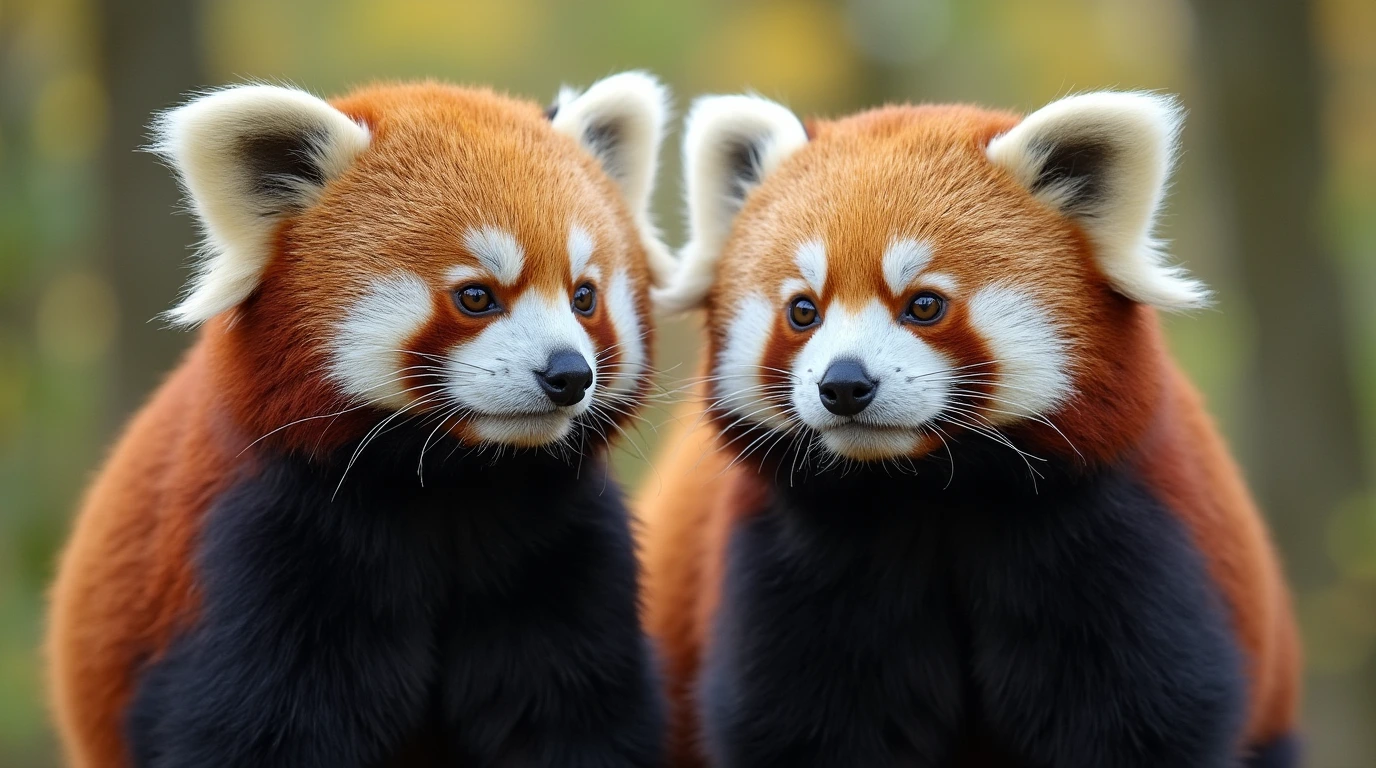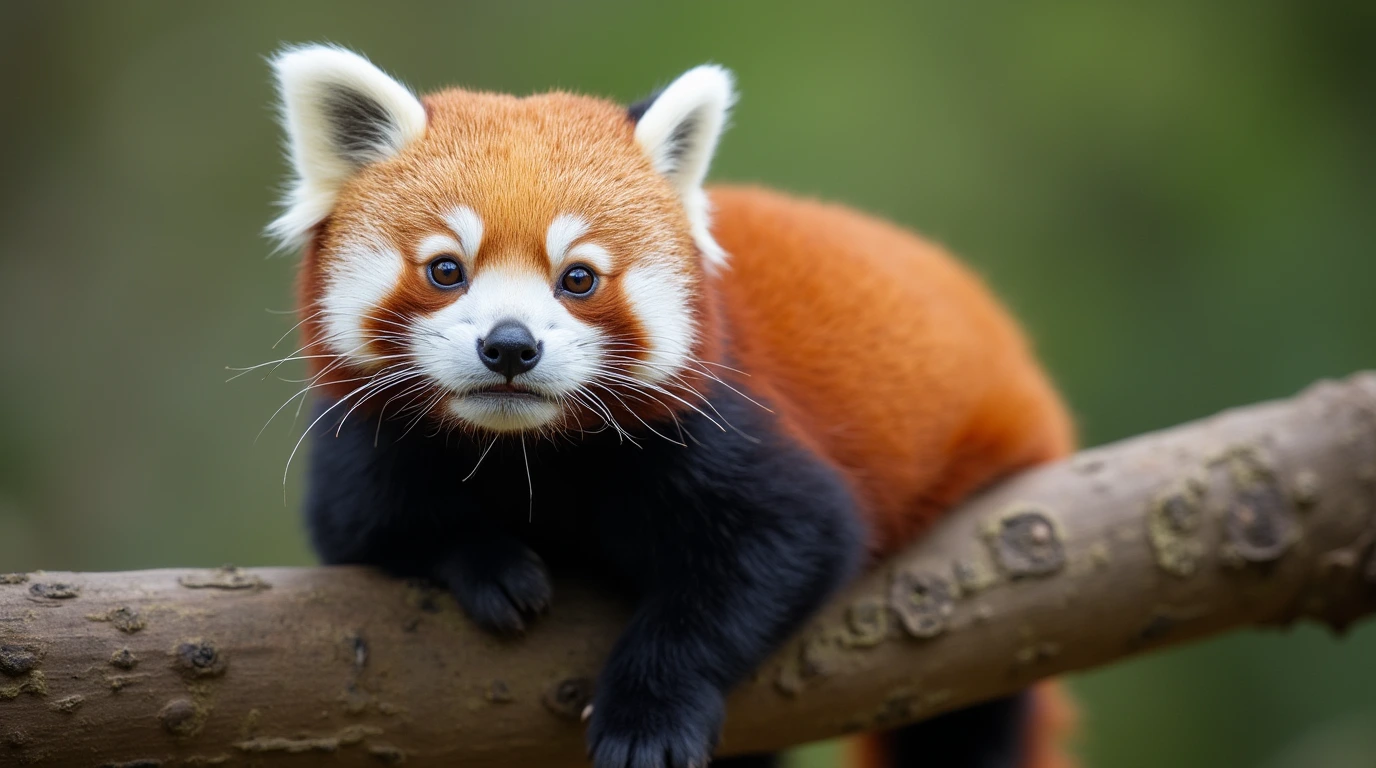Red pandas are often spotted alone in the wild, moving through dense forests and foraging for bamboo. But does this mean they are strictly solitary animals, or do they have social interactions? Unlike many mammals that rely on group structures for survival, red pandas have evolved to be largely independent creatures, interacting only when necessary. Their territorial nature, food requirements, and communication methods all support a solitary lifestyle, though exceptions exist during mating season and mother-cub bonding periods
In this article, we will explore whether red pandas are solitary or social animals, breaking down how they establish and defend their territories, when they interact with others, and how their social behaviors differ in the wild versus captivity. By the end, you’ll have a deeper understanding of how red pandas balance isolation with occasional interactions in their natural habitat
Do Red Pandas Live Alone Or In Groups?

Red pandas are best known for their independent and territorial nature, spending most of their lives alone. Unlike pack animals or social mammals that rely on group dynamics for survival, red pandas have adapted to a solitary existence, where they rely on scent marking, body language, and minimal vocalizations to communicate without direct interaction. Their behavior is shaped by their habitat, diet, and survival strategies, making them one of the most solitary members of the animal kingdom
Why Red Pandas Prefer a Solitary Lifestyle
The primary reason red pandas are solitary lies in their dietary limitations. Bamboo, which makes up around 95% of their diet, is a low-calorie food source that requires them to consume large amounts throughout the day. Unlike animals that hunt in packs to secure food, red pandas must spend hours foraging alone to meet their energy needs. Sharing a territory with others would increase food competition, making a solitary lifestyle the most efficient survival strategy
In addition to food availability, their territorial instincts further reinforce their preference for solitude. Red pandas claim large home ranges, with males typically occupying territories of about one square mile (2.5 km²), while females have smaller territories that may overlap with males. These boundaries are reinforced through scent marking, which helps avoid unnecessary confrontations. By leaving chemical signals on trees, rocks, and forest paths, red pandas can communicate their presence without needing face-to-face encounters
Another key factor contributing to their solitary nature is predator avoidance. Red pandas face threats from snow leopards, martens, and birds of prey, making it crucial for them to stay hidden. By living alone and maintaining a quiet, inconspicuous presence, they reduce their chances of attracting predators. Their crepuscular activity cycle, where they are most active during dawn and dusk, further helps them avoid potential threats while foraging
How Red Pandas Establish and Defend Their Territory
Red pandas do not use direct aggression to defend their territory as some other carnivores do. Instead, they rely primarily on scent marking to maintain boundaries and signal their presence to others. They have specialized scent glands located near their anogenital area and on the soles of their feet, which they use to mark trees, branches, and rocks. These scent markers act as chemical “signposts,” allowing other red pandas to detect occupied territories and avoid unnecessary encounters
In addition to scent marking, red pandas occasionally use vocalizations and body language to assert dominance. If two red pandas come across each other near a territorial boundary, they may engage in tail arching, head bobbing, and ear flattening as a warning display. If one does not back down, they may emit growls or huffing sounds, though physical confrontations are rare
During the breeding season, territorial boundaries may shift slightly as males seek out females for mating. However, once mating is complete, red pandas quickly return to their solitary routines, reinforcing their scent marks to reestablish territorial boundaries
When Red Pandas Interact With Others
Although red pandas are primarily solitary, there are a few instances where they engage in social interactions. The most common scenario is during the mating season, which occurs between January and March. During this period, males temporarily leave their established territories in search of receptive females. Communication between potential mates involves vocalizations such as bleats and twittering sounds, as well as an increase in scent marking behaviors. Once mating is complete, the pair separates, and the female takes on sole responsibility for raising offspring
Another key exception to their solitary nature is mother-cub interactions. Female red pandas give birth to one to four cubs, usually in tree hollows or dens lined with moss and leaves. The mother dedicates the first few months to raising and protecting her young, frequently moving them between different nesting sites to ensure their safety. During this time, vocal communication increases, with cubs producing chirping and whining sounds to signal hunger or distress. By six to eight months old, cubs start developing independence, and by one year old, they leave their mother’s territory to establish their own
While red pandas do not form permanent social groups, temporary tolerance may occur in resource-rich environments. In captivity, for example, red pandas housed together may display more social behaviors, such as mutual grooming or playing, though they still prefer to maintain personal space. Similarly, in areas where food sources overlap, wild red pandas may coexist in relative proximity without direct social bonds
For additional insights into red panda social behaviors and territorial habits, you can refer to the Smithsonian National Zoo’s article on red panda social structure, which explores their solitary lifestyle in greater detail
Social Behaviors in Different Environments

While red pandas are naturally solitary, their social behaviors can vary depending on their environment. In the wild, they maintain independent territories and interact only when necessary. However, in captivity, where space is more limited and food is readily available, their tolerance for social interactions can increase. Additionally, certain life stages, such as motherhood and juvenile development, involve more frequent interactions, shaping how red pandas communicate and bond
Mother and Cub Interactions in the Wild
One of the few exceptions to red pandas’ solitary nature is the strong bond between mothers and their cubs. After a gestation period of about 134 days, female red pandas give birth to one to four cubs in a well-hidden nest, typically located in tree hollows, rocky crevices, or dense vegetation. Unlike many other mammals where both parents participate in raising young, male red pandas do not play a role in cub-rearing, leaving the mother solely responsible for their care
For the first few months, the mother maintains constant vigilance, frequently moving her cubs between multiple den sites to protect them from predators. Cubs are blind and deaf at birth, relying entirely on touch, scent, and vocalizations to communicate with their mother. When hungry or in distress, they emit soft chirps and whimpers, prompting the mother to respond with grooming, repositioning, or nursing
As cubs grow, they begin exploring their surroundings, interacting with their mother through playful nips, tail wrestling, and pawing behaviors. These early interactions serve as crucial learning experiences, teaching cubs how to climb, forage, and communicate using body language. By six to eight months old, cubs start eating solid food and spending more time away from the mother, though they still rely on her protection. By the time they reach one year old, they are fully independent and leave their mother’s territory to establish their own, reinforcing the red panda’s solitary lifestyle
Do Captive Red Pandas Show More Social Behavior?
In captivity, red pandas experience a different social dynamic compared to their wild counterparts. While they still maintain an instinct for solitude, being housed in closer proximity to others leads to greater social tolerance. Zoos often introduce red pandas to each other at a young age, increasing the likelihood of peaceful cohabitation. However, even in captivity, red pandas prefer maintaining personal space and tend to interact only when necessary
Captive red pandas sometimes display social behaviors not commonly observed in the wild, such as mutual grooming, playful chasing, and occasional shared resting spaces. These behaviors suggest that while red pandas are naturally solitary, they are capable of forming temporary social bonds under the right conditions. However, the need for territorial boundaries remains, and zookeepers often provide separate resting areas to prevent stress-related conflicts
Males, in particular, can become aggressive toward one another if housed together after reaching sexual maturity. However, in some cases, bachelor groups of male red pandas raised together from birth can coexist without significant issues. Female red pandas tend to be more tolerant of each other, especially if introduced at a young age
To replicate natural behaviors, zoos provide environmental enrichment, such as climbing structures, hidden food puzzles, and scent-marking opportunities. These activities help captive red pandas maintain their instinctive behaviors, reinforcing their preference for independent movement while still allowing for controlled social interactions
Environmental Factors That Influence Red Panda Socialization
Although red pandas are solitary by nature, certain environmental conditions can temporarily increase their social tolerance. One of the most significant factors is food availability. In areas where bamboo is abundant and food sources are concentrated, multiple red pandas may be seen foraging in relatively close proximity without engaging in aggressive interactions. However, this does not mean they are forming social groups—rather, they are coexisting in the same space due to resource distribution
Seasonal changes also influence red panda behavior. During the mating season (January to March), social interactions briefly increase as males seek out receptive females. While these interactions are temporary, they mark one of the few times red pandas willingly engage with others outside of mother-cub relationships
In extreme cold weather, red pandas may show a rare willingness to share sheltered spaces, particularly in high-altitude regions where tree hollows and caves are limited. While they do not huddle together like some social species, they may tolerate the presence of another red panda nearby to maximize warmth and protection
Ultimately, while red pandas remain solitary under most circumstances, their social behaviors can shift in response to environmental pressures, food availability, and captivity conditions. However, these moments of interaction are temporary and situational, reinforcing that red pandas are fundamentally independent creatures
For further insights into how red pandas behave in different environments, you can explore the Red Panda Network’s guide on red panda social habits, which provides additional details on their solitary and seasonal behaviors
How Red Pandas Adapt Their Social Behavior Throughout Life

Red pandas maintain a largely solitary lifestyle, but their social behaviors evolve as they grow from cubs to independent adults. From the strong maternal bonds during early life to the brief interactions during mating season, their social tendencies shift based on their developmental stage, survival needs, and environmental factors
From Cubs to Independence: Social Bonds in Early Life
At birth, red panda cubs are entirely dependent on their mothers, forming their first and strongest social bond. In the first few months, they communicate through chirping and whimpering sounds, signaling hunger or distress. The mother responds with grooming, repositioning, and feeding, ensuring the cubs’ survival
Cubs spend the majority of their early months inside a secure nest, venturing outside only when they begin developing basic motor skills. Around three months old, they start exploring their surroundings, engaging in playful interactions with their siblings, if present. These playful behaviors include pawing, tail wrestling, and gentle biting, which help cubs develop coordination and social awareness
By six to eight months, cubs begin eating solid food and start imitating their mother’s scent-marking behaviors. They gradually reduce their dependence on her and spend more time independently foraging. Around their first birthday, cubs leave their mother’s territory to establish their own, transitioning to a solitary lifestyle. This marks the end of their only true social phase, reinforcing their independence in adulthood
Brief Social Encounters During Mating Season
One of the few times adult red pandas interact is during the mating season, which occurs between January and March. Males become more active and vocal, increasing their scent-marking behaviors to attract females. They also produce high-pitched bleats, a rare vocalization used specifically during courtship
When a male encounters a receptive female, their interaction is typically brief and non-aggressive. After mating, the pair separates immediately, and the female resumes her solitary life, preparing for cub-rearing without further involvement from the male. This seasonal shift in social behavior is one of the only times red pandas tolerate close contact as adults
Old Age and Social Tolerance in Captivity
In the wild, older red pandas continue to live alone until the end of their lifespan, maintaining their territorial habits and solitary routines. However, in captivity, red pandas sometimes exhibit increased social tolerance as they age. Older individuals may engage in more mutual grooming and resting near other red pandas, particularly if they have coexisted for long periods
Zoos and conservation centers carefully manage pairing or grouping strategies to ensure red pandas experience minimal stress. Older red pandas may be housed with a compatible companion, often a long-time mate or sibling, to promote emotional well-being while still respecting their natural preference for independent space
For additional insights into how red pandas’ social behaviors evolve throughout life, you can explore the WWF’s guide on red pandas, which details their solitary habits and rare social interactions













